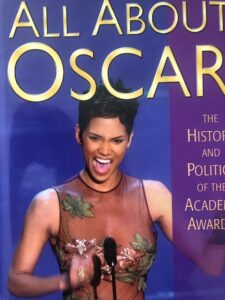MGM’s wartime melodrama, The White Cliffs of Dover, was one of the ten most commercially popular films of 1944, largely due to its timely subject matter and patriotic-sentimental tone.
Grade: B (*** out of *****)
| The White Cliffs of Dover | |
|---|---|

Theatrical release poster
|
|
Based on the 1940 poem by Alice Duer Miller, the story chronicles the trials and tribulations of one courageous woman, beautifully played by Irene Dunne, as she lives through two major wars.
Multiple Oscar nominee (but never winner) Dunne plays Susan Ashwood, an American woman who falls in love with a titled Brit, Sir John Ashwood (Alan Marshal). After marrying him, she goes to live with his aristocratic family, headed by his strong-willed mother (Gladys Cooper).
At the end of WWI, in 1918, when John is killed in the battlefield, the distraught but loyal wife vows to pull herself together for the sake of their boy.
Played by Roddy McDowall in his early scenes, Susan’s son grows up to be Peter Lawford. At the outbreak of WWII, Irene despairs at the thought of losing another loved one, but Lawford convinces her that his father would have wanted him to be patriotic.
While working as a Red Cross volunteer, the mother is forced to tend her own mortally wounded son. Unable to save his life, she is grief-stricken, but is gratified with the notion that both her husband and her son have died as heroes.
The film is smoothly directed by Clarence Brown from a screenplay by Claudine West, Jan Lustig and George Froeschel.
West and Froeschell had won the writing Oscar two years earlier for Mrs. Miniver, which may explain the similar ideas in both films.
The secondary cast of this prestige production includes Frank Morgan as Irene Dunne’s father, May Whitty as a nanny, June Lockhart as the grown girl (played by Elizabeth Taylor as a young one), C. Aubrey Smith, Van Johnson, and Jill Esmond.
There is one particularly touching scene between child actors and later friends, Roddy McDowall and Elizabeth Taylor, who plays the neighboring girl in love with McDowall.
Like many films of its era, White Cliffs of Dover struck a responsive chord with filmgoers, grossing over $4 million at the box-office. Clearly, this was MGM’s flag-waving picture, trying to reprise the success of the 1942 Oscar winning Mrs. Miniver.
My Oscar Book:
Oscar Nominations: 1
Cinematography (b/w): George Folsey
Oscar Awards: None
Oscar Context:
The Oscar winner was Joseph LaShelle for Preminger’s Laura.
Cast
Irene Dunne as Susan Ashwood
Alan Marshal as Sir John Ashwood
Roddy McDowall as John Ashwood II as a Boy
Frank Morgan as Hiram Porter Dunn
Van Johnson as Sam Bennett
Aubrey Smith as Colonel Walter Forsythe
Dame May Whitty as Nanny
Gladys Cooper as Lady Jean Ashwood
Peter Lawford as John Ashwood II as a Young Man
John Warburton as Reggie Ashwood
Jill Esmond as Rosamund
Brenda Forbes as Gwennie
Norma Varden as Mrs. Bland
Elizabeth Taylor as Betsy Kenney at Age 10
Ian Wolfe as Skipper of Honeymoon Boat
Credits
Directed by Clarence Brown
Screenplay by Claudine West, Jan Lustig [de] George Froeschel
Robert Nathan, based on The White Cliffs (1940 verse novel) by Alice Duer Miller
Produced by Clarence Brown, Sidney Franklin
Cinematography: George J. Folsey, Robert H. Planck
Edited by Robert Kern
Music by Herbert Stothart
Production company: Metro-Goldwyn-Mayer
Distributed by Loew’s Inc.
Release date: May 11, 1944 (US)
Running time: 126 min.
Budget $2,342,000
Box office $4,045,000 (domestic)
$2,249,000 (foreign)




